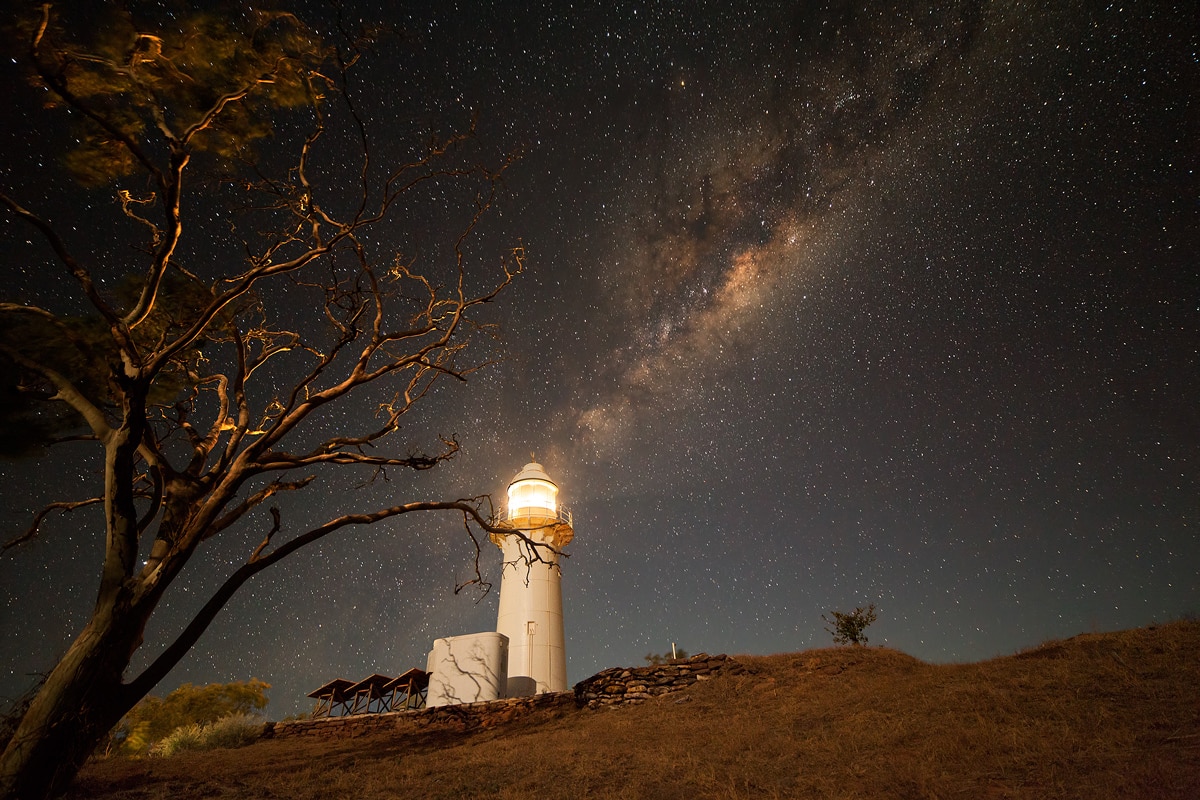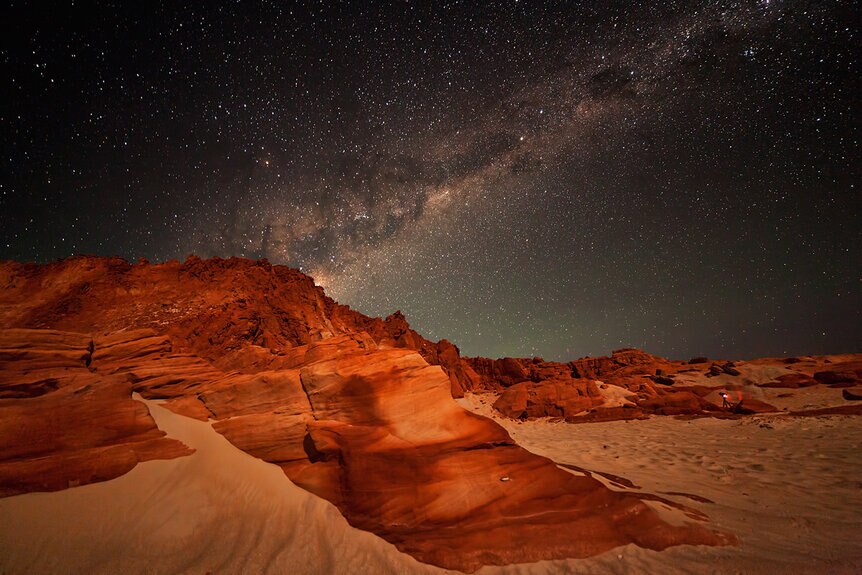Create a free profile to get unlimited access to exclusive videos, sweepstakes, and more!
The Shores of the Cosmic Ocean

Yesterday, I went all sciencey on a gorgeous picture of M83, a nearby spiral galaxy. What I didn’t mention, though, is that the galaxy we live in—the Milky Way—is pretty similar. It’s a flattened disk with spiral arms, a central bulge of stars, and lots of stars and dust. M83 just so happens to be oriented so we see it face-on, providing us with the spectacular view I described in that post.
But we live inside the Milky Way, so our view of our own galaxy is different. Nothing illustrates that better than a nice time exposure of the night sky, so here’s one of surpassing beauty for you:
This lovely shot was taken by Mike Salway, an amateur astronomer and photographer living in Australia. He shot this at Cape Leveque in northwestern Australia, on the coast of the Indian Ocean. It’s a single 30 second exposure, which was enough to show the Milky Way without overexposing the lighthouse. I like the way the tree reaches in and how the branches are lit. It’s funny how it looks like the Milky Way is coming out of the lighthouse.
That band of light is the combined glow of millions if not billions of stars in our galaxy. Because the Milky Way is a flat disk, and we’re inside it, we see it as a stream across the sky. In the center of our galaxy is the bulge, a roughly spherical mass of perhaps 20 billion stars, and you can see it plain as day in that picture! Littering the plane of the disk are vast clouds of opaque dust (I talk about this in the M83 post as well) that block our view of the stars behind them and leave a dark lane across the Milky Way (and that nifty X pattern right in the center of the bulge).
Salway also took another fantastic picture of the Milky Way, this time at the beach itself:
Wow. In this one you can see some famous stars like Alpha Centauri (the bright orange one just to the right of center, sitting in the middle of the plane of the Milky Way) and Beta Centauri just above it. A bit farther out along the galaxy’s disk you can see a dark splotch: That’s the Coal Sack, a cloud of dust about 30 light years or so across and about 600 light years away. Immediately above and to the right of the Coal Sack is the constellation of Crux, the Southern Cross. Salway also has a shot of the same scene but with a very bright shooting star called a fireball blazing across. Pretty cool.
It’s amazing what you can see in a photo that’s just half a minute long. It helps, of course, to have the natural beauty of Australia in the foreground and the aggregated might of a massive galaxy in the background.
I sometimes like to think of the Milky Way as a city, with a hustling downtown area toward the center (the bulge) and the spiral arms as the suburbs. Happily for us, we live in a pretty nice part of town that has a fantastic view.
[Note: I stole the title of this post from the title of Carl Sagan's first episode of "Cosmos." It seemed appropriate.]
















